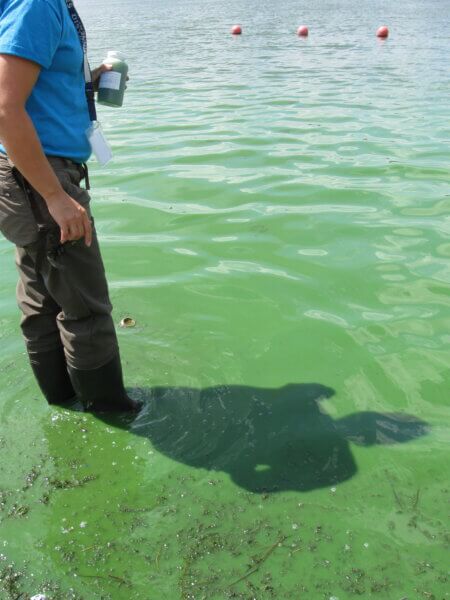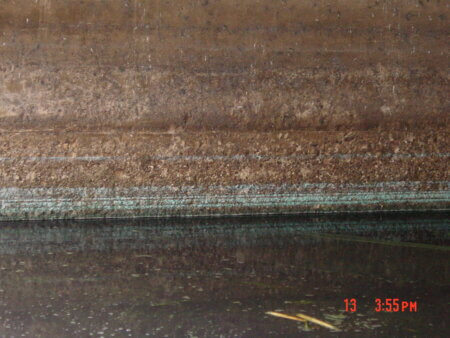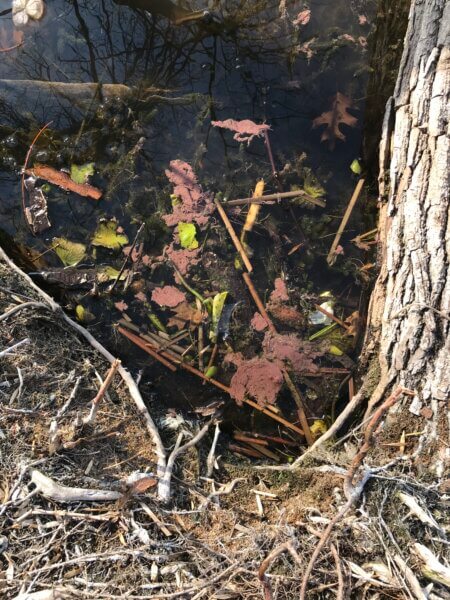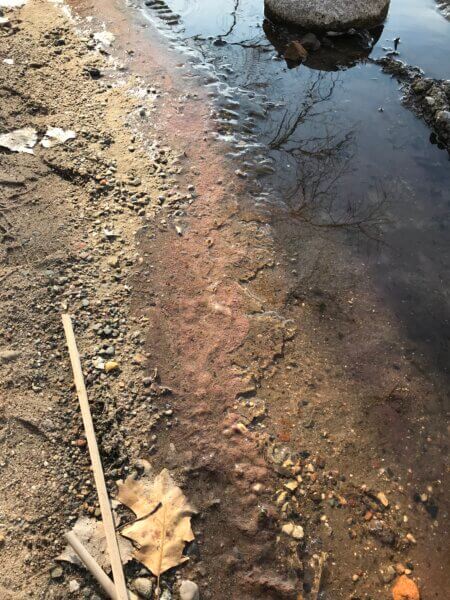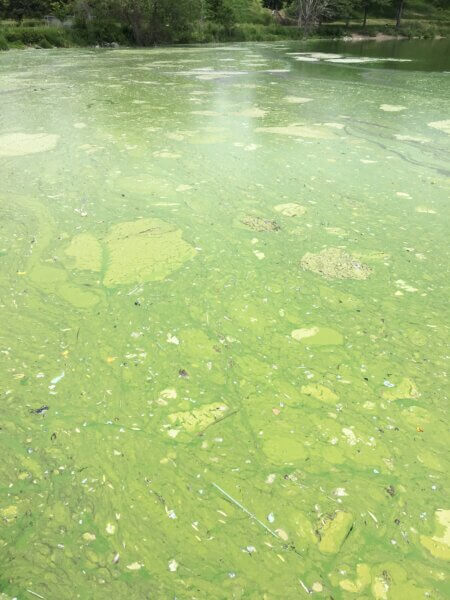Blue-green algae blooms are often described as looking like pea soup or spilled green paint. They can also appear as a brown or rust color in the water. However, blooms are not always large and dense and can sometimes cover small portions of the lake with little visible algae present. Blooms can also produce a swampy odor when the cells break down.
What are blue-green algae and blue-green algae blooms?
Blue-green algae are normally present in lakes throughout Minnesota. This type of algae – which is actually a bacteria called cyanobacteria – thrives in warm, shallow, nutrient-rich lakes. When conditions are right, blue-green algae can grow quickly and form “blooms” that can be toxic to people and animals, causing a variety of symptoms.
Minneapolis Park and Recreation Board staff monitor for blue-green algae weekly by conducting cyanotoxin testing and a visual monitoring index. An advisory is posted on the Lake Water Quality Map if Minnesota Pollution Control Agency (MPCA) guidelines are exceeded or when blooms blow into the beach area. When at the beach, look for informational signs on blooms or yellow advisory signs. See Beach Water Resources for more information on MPRB beach monitoring.
Long-term stormwater management is one key to keeping lake water quality suitable for recreation and for sustaining plants and wildlife. MPRB is seeking dedicated funding to invest in stormwater management and protect Minneapolis lakes.
What do blue-green algae blooms look like?
Why are blue-green algae blooms harmful?
Blue green algae can sometimes produce cyanotoxins, which can make humans and animals sick, particularly if ingested. You can become sick if you swallow, have skin contact with, or breathe in airborne water droplets while swimming or boating in water that has harmful algal toxins. According to the Minnesota Department of Health (MDH), symptoms of illness from blue-green algae can include vomiting, diarrhea, rash, eye irritation, cough, sore throat, and headache. Symptoms generally begin from several hours to up to two days after exposure.
Tips for Dog Owners
Dogs that come into contact with blue-green algae blooms can get sick, and sometimes die because their bodies are smaller, and they tend to swallow a lot of water.
- Remember that dogs are not allowed at Minneapolis Beaches and must always be on a leash.
- Always look at water conditions before letting your dog swim or wade.
- Give your dog fresh water to minimize the amount of lake water they drink.
- Rinse your dog off as soon as possible after being in the water. Since dogs often lick their fur, they can swallow toxins even after they are dry.
If your dog has been in the water near a blue-green algae bloom and seems sick, call your vet. For more information about protecting your pets visit MDH: Harmful Algal Bloom-Related Illness in Animals.
What should I do if I see or suspect a bloom?
Adults, children, and animals should avoid contact with water with blue-green algae. There is no way to tell if an algae bloom is toxic just by looking at it. Therefore, the MDH advises the following:
- Don’t swim if you can’t see your feet in knee-high water.
- If you’ve recently been in contact with an algae bloom, make sure to wash off with fresh water.
- When in doubt, stay out!
- Watch for signs of recent blooms, such as green scum on the shoreline.
- Protect pets: Don’t let dogs drink or swim in the water. Keep them from eating debris that has washed up on the shore.
Preventing Harmful Algal Bloom-Related Illness
The MDH provides more information about minimizing the risk of exposure to blue-green algae and harmful algae blooms from swimming, boating, or consuming fish.
Protecting Lake Water Quality
You can help reduce nutrients in lakes by:
- Minimizing the use of lawn fertilizers.
- Not using phosphate-containing fertilizers.
- Preventing leaves and grass clippings from washing into storm drains.
- Cleaning up after your pets.
Decreasing nutrients will help to decrease the frequency and intensity of blue-green algae blooms. These actions may take time and a lot of community involvement to effectively change the impacts of blue-green algae blooms in Minneapolis lakes.








